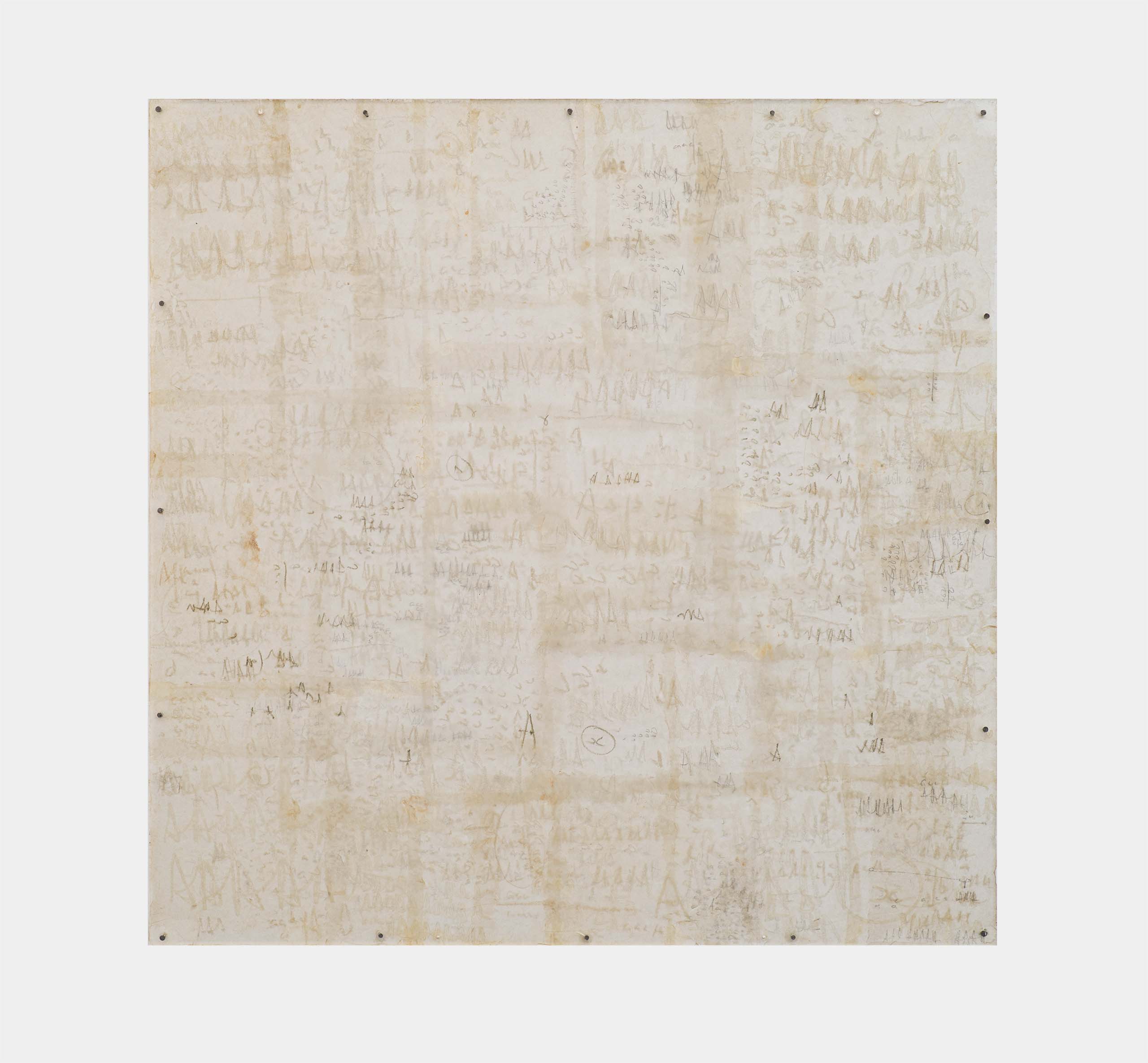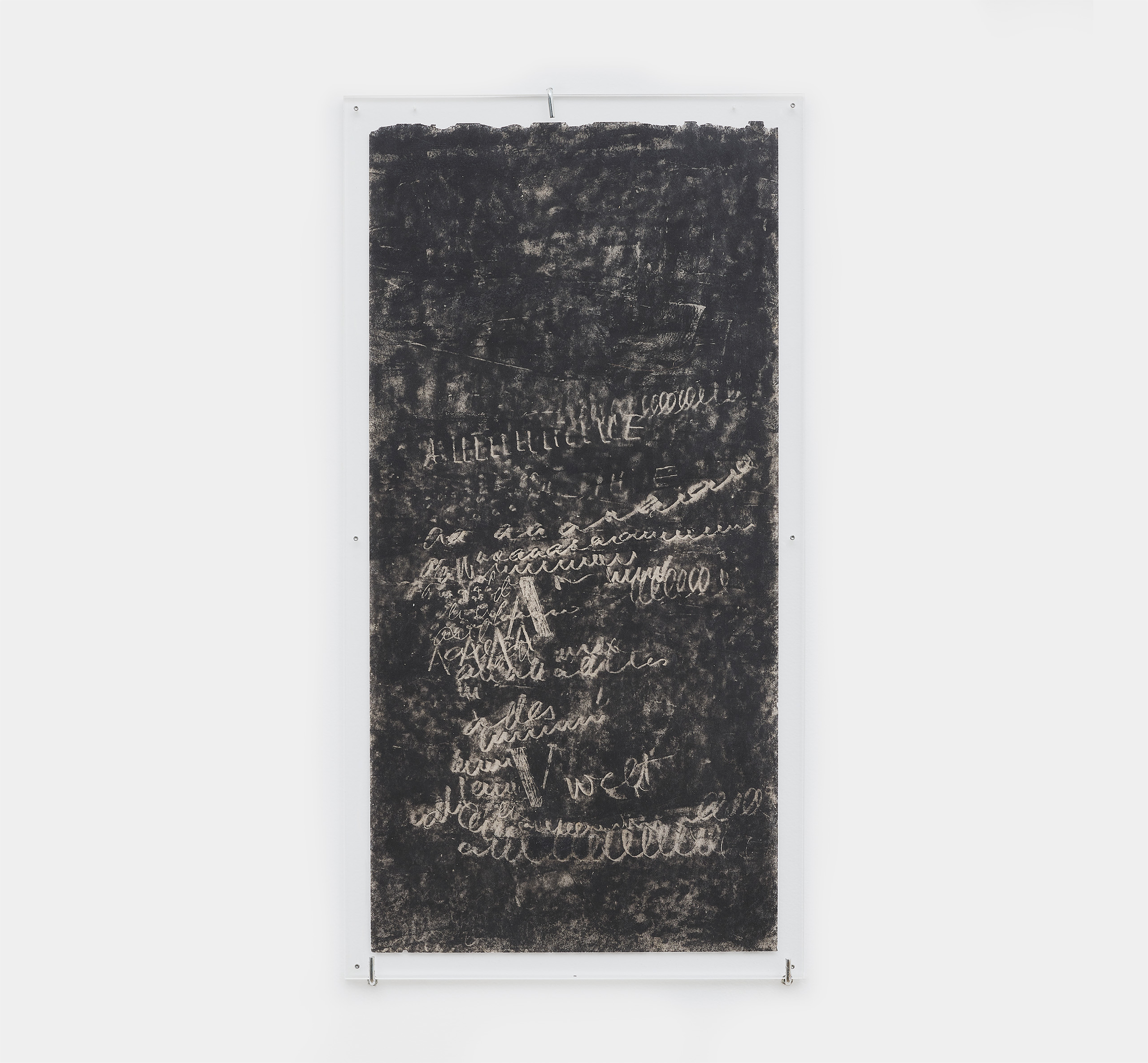Mira Schendel
In the changing landscape of modern art in the mid-20th century, Mira Schendel's work stands out for its original way of blending lightness, energy, sensitivity and a strong intellectual motivation. Hardly aligned with any current of modern art, her work transcends the artistic debates of her time. Schendel produced paintings, sculptures, installations, drawings, printed and handmade books, and she was also a poet and graphic artist. The relationship between image and word, the limits of language and perception, and her engagement with philosophy, in particular phenomenology, are fundamental aspects of her career.
Born in Switzerland in 1919, Schendel lived in Italy during the 1930s, where she studied philosophy, theology and art. The need to flee Nazi persecution led Schendel to live in various European cities, and in 1949 she moved to Brazil, settling first in Porto Alegre and later in São Paulo. Her painting practice, which during her stay in Italy consisted of still lifes and oil portraits, gradually changed, leaving behind figurative art. At the same time, she worked with poetry and graphic design, an experience that anticipated the centrality of words and language in many of her works.
In the 1960s, she began to create series named according to the working process adopted, such as the Bordados [Embroideries] - made with ecoline ink on paper - and the Monotipias [Monotypes], drawings made through a process that allowed for the creation of unique works: on the reverse side of a sheet of Japanese rice paper, positioned on a glass sheet covered in a thin layer of ink, Schendel would draw with the aid of various instruments, such as her own fingernail or another slightly pointed object, thus creating irregular marks. In these works, the detachment from the technical mastery traditionally associated with drawing stands out, as does the breaking down of hierarchies, for example between the figure and the background, or the empty space of the paper, which gained increasing autonomy in later works. Bordados – realizados com tinta ecoline sobre papel – e as Monotipias, desenhos feitos com um procedimento que permitia a criação de obras únicas: no avesso de uma folha de papel de arroz japonês, posicionado sobre uma superfície de vidro coberta por uma fina camada de tinta, Schendel desenhava com o auxílio de instrumentos diversos, como sua própria unha ou outro objeto pouco pontiagudo, criando assim marcas irregulares. Nesses trabalhos, destaca-se o distanciamento do domínio técnico tradicionalmente associado ao desenho e o rompimento de hierarquias como, por exemplo, entre a figura e o fundo, espaço vazio do papel, que passa a ganhar crescente autonomia em obras posteriores.
Her material research then advanced into the three-dimensional. Rice paper appears in works such as Trenzinho [Little train]- made up of many sheets of blank paper hung on a nylon thread, and the celebrated series Droguinhas [Little nothings], in which the paper is twisted and woven as if it were a thread. She went on to work with plexiglass, which allowed her to explore the qualities of transparency and lightness. In the series Objetos gráficos [Graphic objects], the drawing is placed between two plexiglass sheets suspended by nylon threads. The dense graphic marks and the materiality of the scattered letters and signs are characteristic of this series, in which Schendel sought to create a new kind of language that could articulate that which is incommunicable. The limit of expressiveness is then linked to Schendel's interest in emptiness and silence, themes that run throughout her production. Trenzinho – formada por muitas folhas de papel em branco enfileiradas em um fio de nylon, e a celebrada série Droguinhas, na qual o papel é torcido e trançado como se fosse uma linha. Passou a trabalhar com o acrílico, material que permite explorar as qualidades da transparência e da leveza. Na série Objetos gráficoso desenho é posicionado entre duas placas de acrílico suspensas por fios de nylon. As densas manchas gráficas e a materialidade das letras e signos são características dessa série, na qual Schendel buscou criar uma espécie de linguagem nova, que pudesse articular aquilo que é incomunicável. O limite da expressividade liga-se então ao interesse de Schendel pelo vazio e pelo silêncio, temas que atravessam toda a sua produção.
Her work was featured in several editions of the Bienal Internacional de São Paulo and since the 1960s she has exhibited at prestigious international institutions, such as Signals Gallery (London, 1966), a place of intense exchange for Brazilian and foreign avant-garde artists. In 2013, Schendel was the subject of a solo show at Tate Modern, also presented in 2014 at Pinacoteca do Estado de São Paulo. Her work is part of public and private collections of great international influence, including Museo Nacional Centro de Arte Reina Sofia, Madrid; The Museum of Modern Art - MoMa, New York; Tate Modern, London; and the Museum of Fine Arts Houston - MFAH. Her work is part of all major collections in Brazil, such as: Pinacoteca do Estado de São Paulo, Museu de Arte Moderna de São Paulo - MAM SP, Museu de Arte Contemporânea da USP - MAC USP, Itaú Cultural, Museu de Arte Contemporânea de Niterói, and many others.

WORKS

Untitled, from the Toquinhos series, 1972
letterset and fabric on paper
49 x 24,8 cm [19 1/4 x 9 3/4 in]
(7635)

More Or Less Fruit, 1964
watercolour and ink on paper
34 x 32 cm (average of each) [13 3/8 x 12 5/8 in]
(8913)







